Abstract
The passive hemagglutination assay was explored as a sensitive test of immunological reactivity of endotoxin and other antigens prepared from selected strains of Vibrio parahaemolyticus. The tannic acid procedure for passive hemagglutination, commonly used with protein antigens, was the only procedure yielding good results with V. parahaemolyticus protein extracts, endotoxins, and related preparations. These results were probably due to the presence of large amounts of protein in the V. parahaemolyticus endotoxins as determined by earlier work referenced in the text. Glucose and galactose as possible antigenic determinants in the endotoxin of a Vibrio strain were tested by inhibition tests. Cross-reactions were observed between endotoxin preparations, but were low in hemagglutination, suggesting reactions of common generic antigens. The ability of V. parahaemolyticus endotoxins to stimulate production of antibodies was determined.
Full text
PDF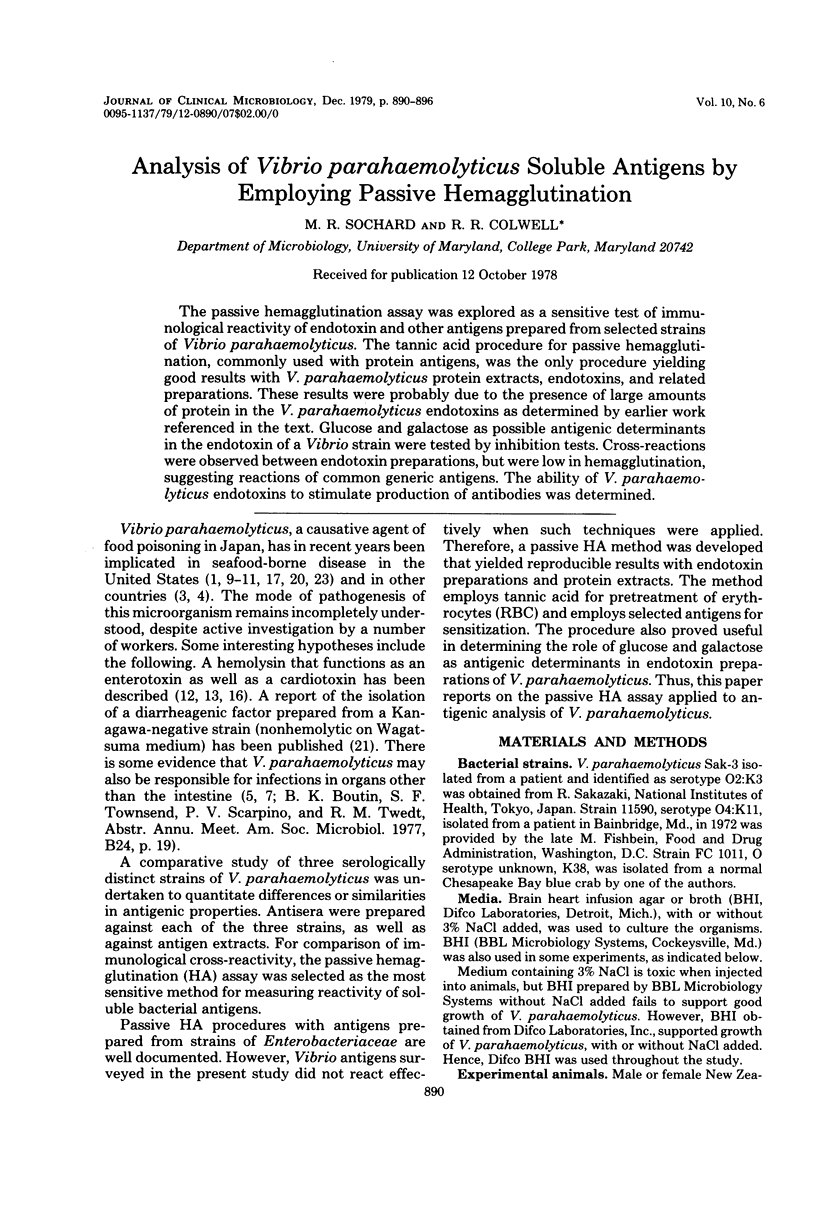
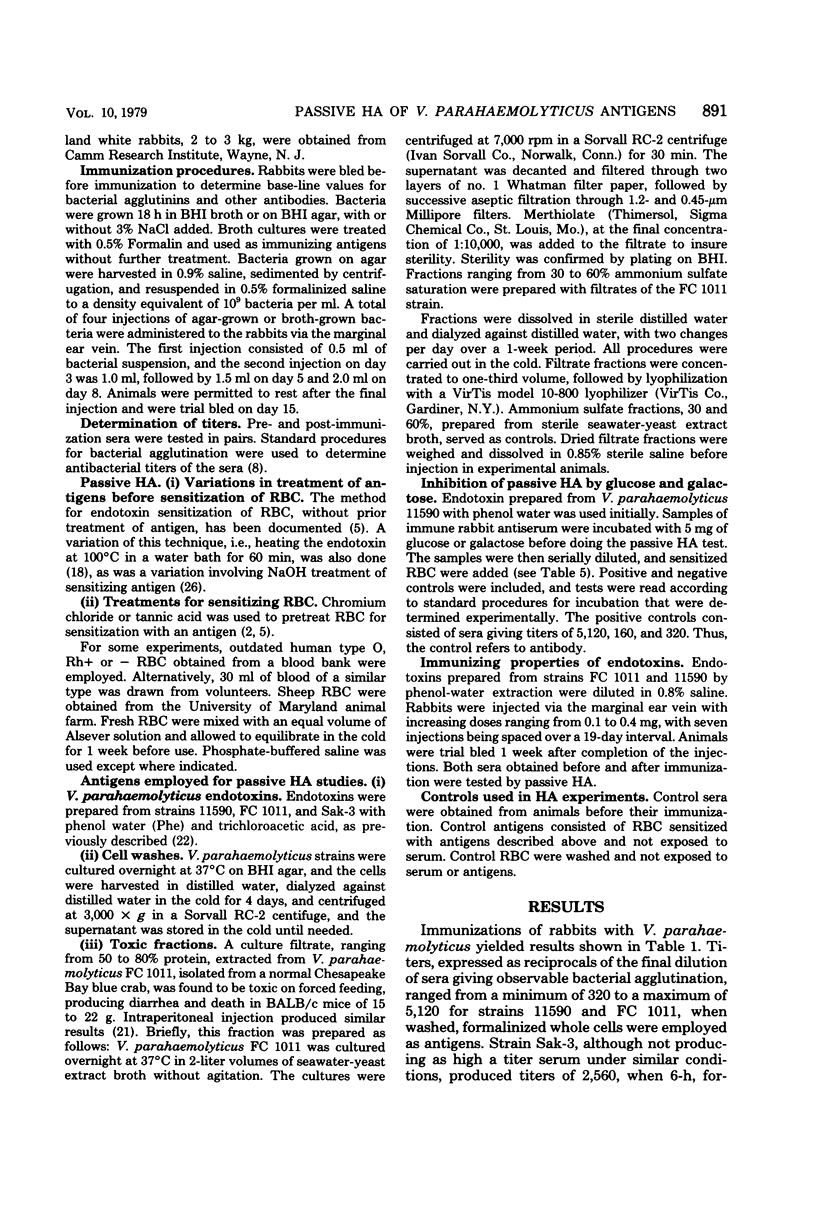
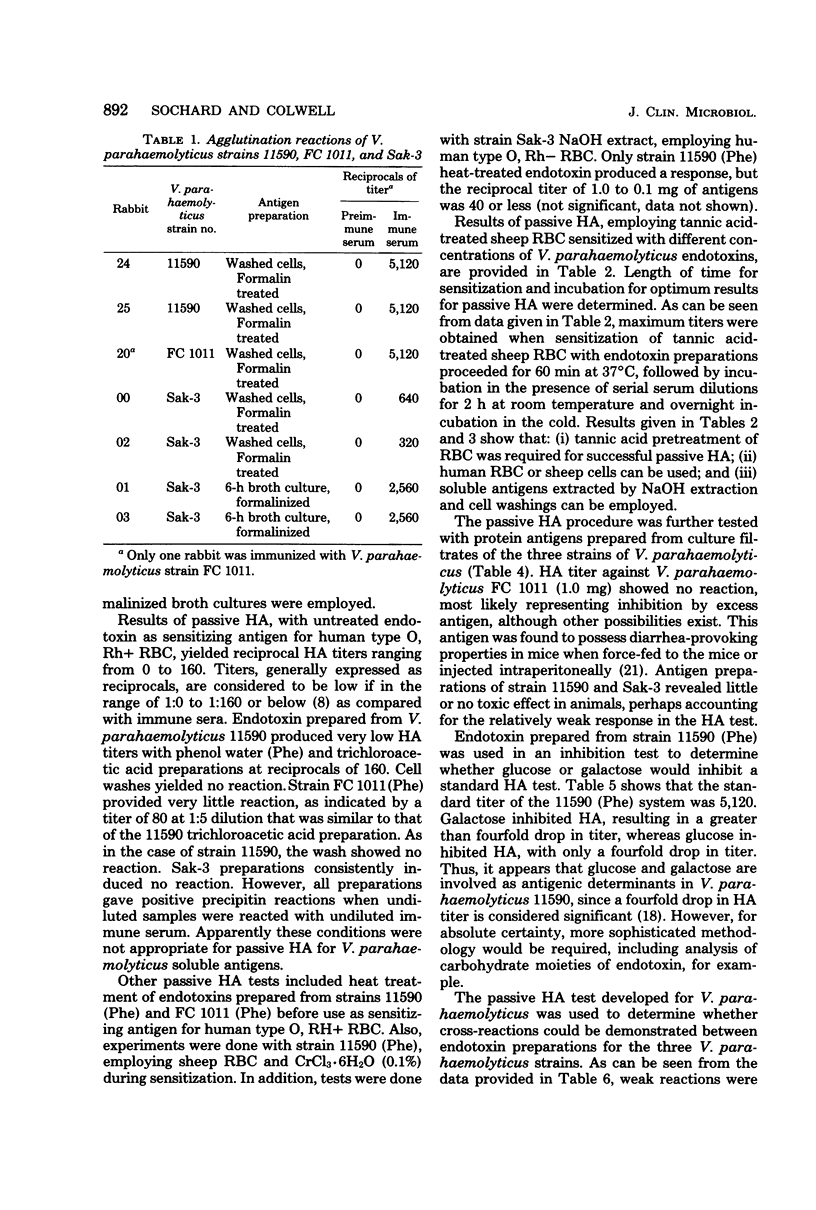
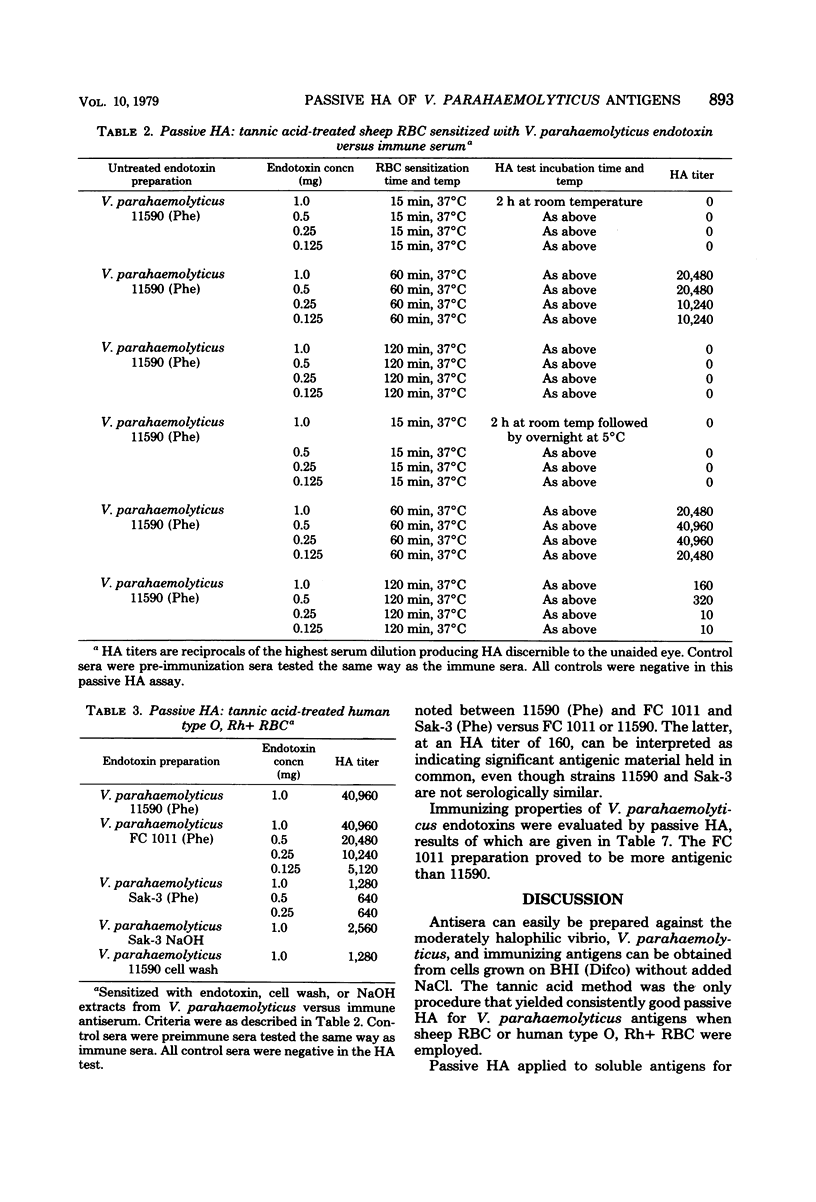
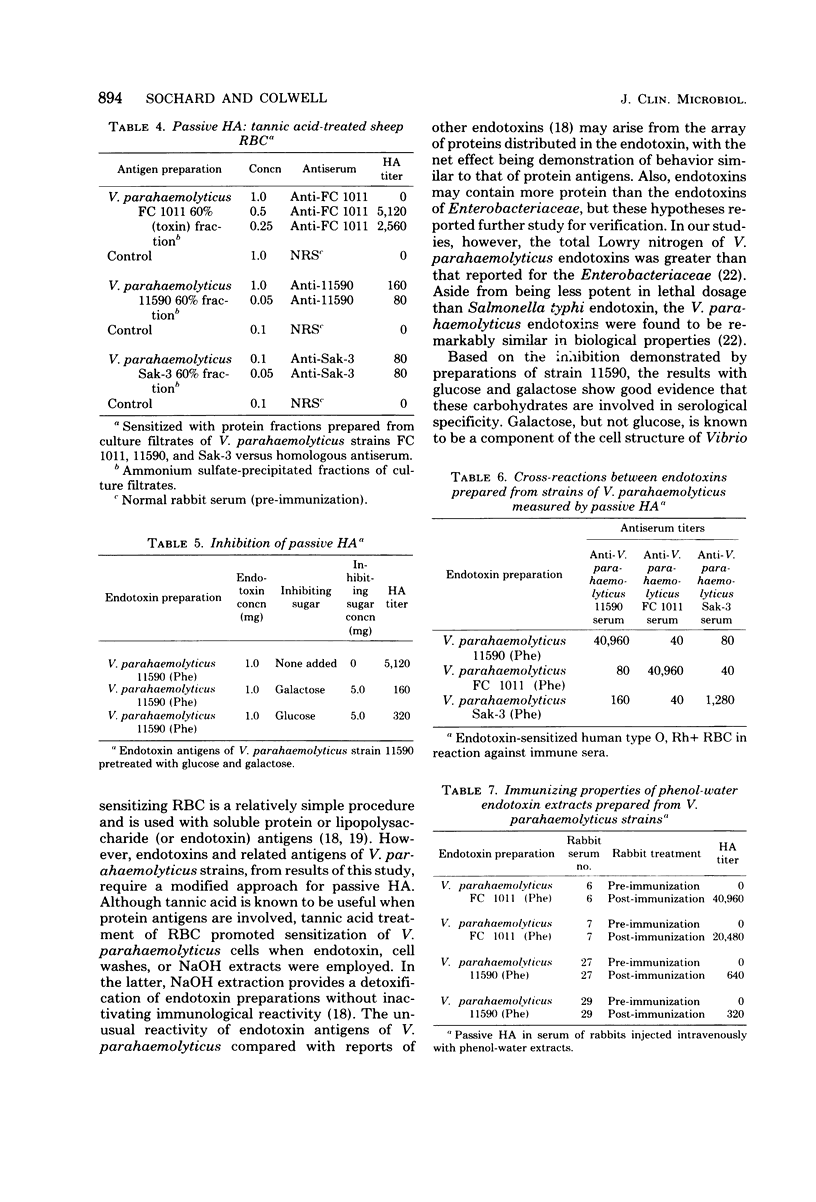
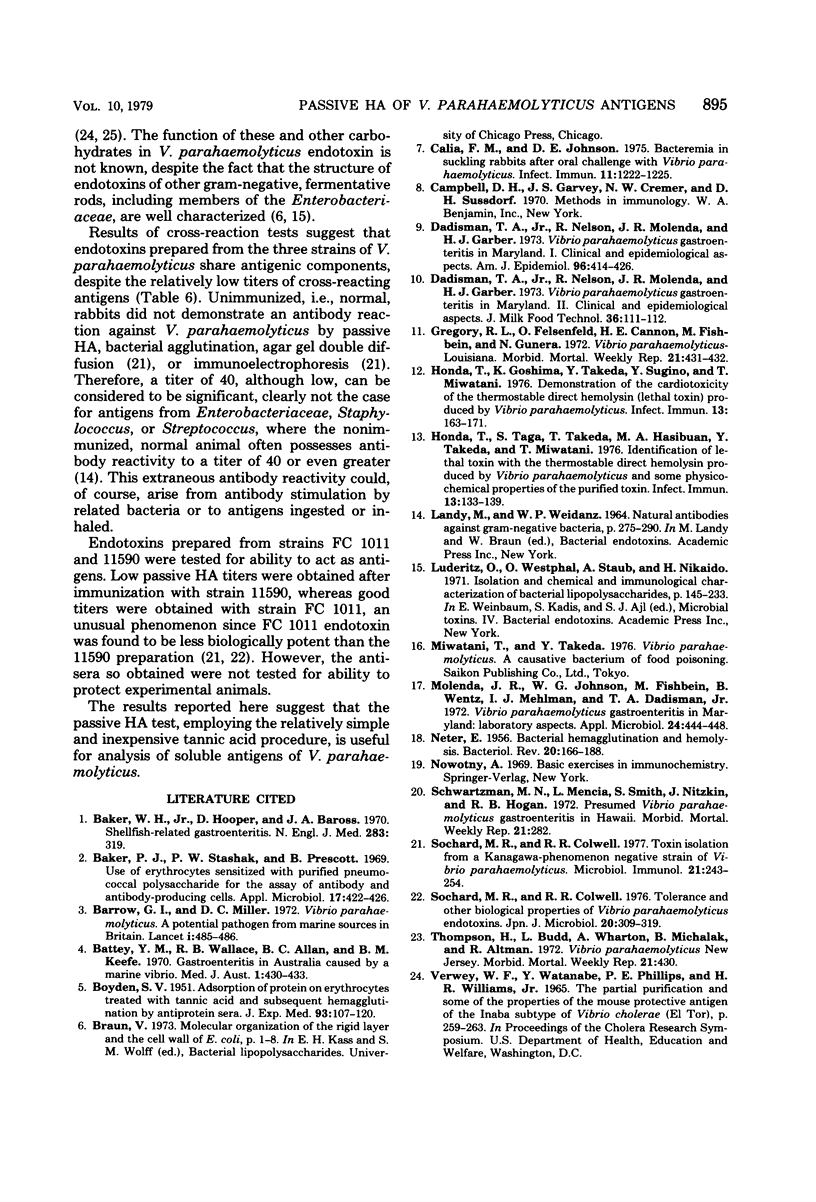
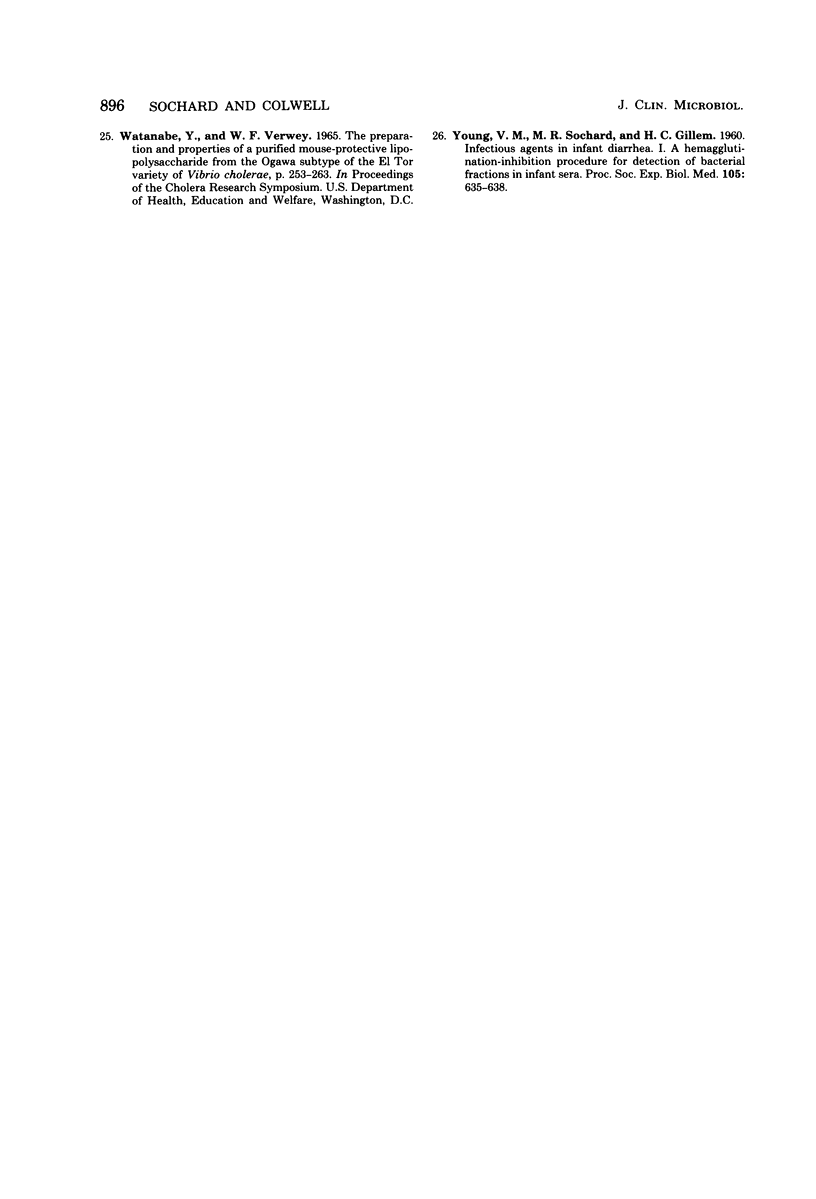
Selected References
These references are in PubMed. This may not be the complete list of references from this article.
- BOYDEN S. V. The adsorption of proteins on erythrocytes treated with tannic acid and subsequent hemagglutination by antiprotein sera. J Exp Med. 1951 Feb;93(2):107–120. doi: 10.1084/jem.93.2.107. [DOI] [PMC free article] [PubMed] [Google Scholar]
- Baker P. J., Stashak P. W., Prescott B. Use of erythrocytes sensitized with purified pneumococcal polysaccharides for the assay of antibody and antibody-producing cells. Appl Microbiol. 1969 Mar;17(3):422–426. doi: 10.1128/am.17.3.422-426.1969. [DOI] [PMC free article] [PubMed] [Google Scholar]
- Barker W. H., Jr, Hooper D., Baross J. A. Shellfish-related gastroenteritis. N Engl J Med. 1970 Aug 6;283(6):319–319. [PubMed] [Google Scholar]
- Barrow G. I., Miller D. C. Vibrio parahaemolyticus: a potential pathogen from marine sources in Britain. Lancet. 1972 Feb 26;1(7748):485–486. doi: 10.1016/s0140-6736(72)90134-1. [DOI] [PubMed] [Google Scholar]
- Battey Y. M., Wallace R. B., Allan B. C., Keeffe B. M. Gastro-enteritis in Australia caused by a marine vibrio. Med J Aust. 1970 Feb 28;1(9):430–433. doi: 10.5694/j.1326-5377.1970.tb77967.x. [DOI] [PubMed] [Google Scholar]
- Calia F. M., Johnson D. E. Bacteremia in suckling rabbits after oral challenge with Vibrio parahaemolyticus. Infect Immun. 1975 Jun;11(6):1222–1225. doi: 10.1128/iai.11.6.1222-1225.1975. [DOI] [PMC free article] [PubMed] [Google Scholar]
- Dadisman T. A., Jr, Nelson R., Molenda J. R., Garber H. J. Vibrio parahaemolyticus gastroenteritis in Maryland. I. Clinical and epidemiologic aspects. Am J Epidemiol. 1972 Dec;96(6):414–426. doi: 10.1093/oxfordjournals.aje.a121474. [DOI] [PubMed] [Google Scholar]
- Honda T., Goshima K., Takeda Y., Sugino Y., Miwatani T. Demonstration of the cardiotoxicity of the thermostable direct hemolysin (lethal toxin) produced by Vibrio parahaemolyticus. Infect Immun. 1976 Jan;13(1):163–171. doi: 10.1128/iai.13.1.163-171.1976. [DOI] [PMC free article] [PubMed] [Google Scholar]
- Honda T., Taga S., Takeda T., Hasibuan M. A., Takeda Y., Miwatani T. Identification of lethal toxin with the thermostable direct hemolysin produced by Vibrio parahaemolyticus, and some physicochemical properties of the purified toxin. Infect Immun. 1976 Jan;13(1):133–139. doi: 10.1128/iai.13.1.133-139.1976. [DOI] [PMC free article] [PubMed] [Google Scholar]
- Molenda J. R., Johnson W. G., Fishbein M., Wentz B., Mehlman I. J., Dadisman T. A., Jr Vibrio parahaemolyticus gastroenteritis in Maryland: laboratory aspects. Appl Microbiol. 1972 Sep;24(3):444–448. doi: 10.1128/am.24.3.444-448.1972. [DOI] [PMC free article] [PubMed] [Google Scholar]
- NETER E. Bacterial hemagglutination and hemolysis. Bacteriol Rev. 1956 Sep;20(3):166–188. doi: 10.1128/br.20.3.166-188.1956. [DOI] [PMC free article] [PubMed] [Google Scholar]
- Sochard M. R., Colwell R. R. Tolerance and other biological properties of Vibrio parahaemolyticus endotoxins. Jpn J Microbiol. 1976 Aug;20(4):309–319. doi: 10.1111/j.1348-0421.1976.tb00993.x. [DOI] [PubMed] [Google Scholar]
- Sochard M. R., Colwell R. R. Toxin isolation from a Kanagawa-phenomenon negative strain of Vibrio parahaemolyticus. Microbiol Immunol. 1977;21(5):243–254. doi: 10.1111/j.1348-0421.1977.tb00285.x. [DOI] [PubMed] [Google Scholar]
- YOUNG V. M., SOCHARD M. R., GILLEM H. C. Infectious agents in infant diarrhea. I. A hemagglutination-inhibition procedure for detection of bacterial fractions in infant sera. Proc Soc Exp Biol Med. 1960 Dec;105:635–638. doi: 10.3181/00379727-105-26201. [DOI] [PubMed] [Google Scholar]


